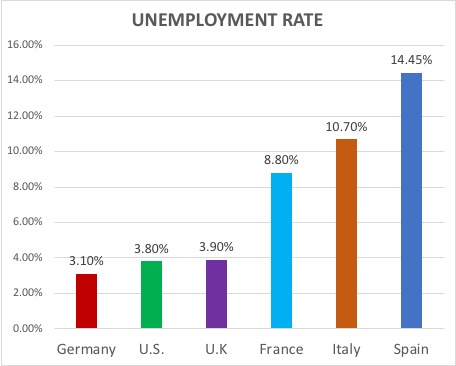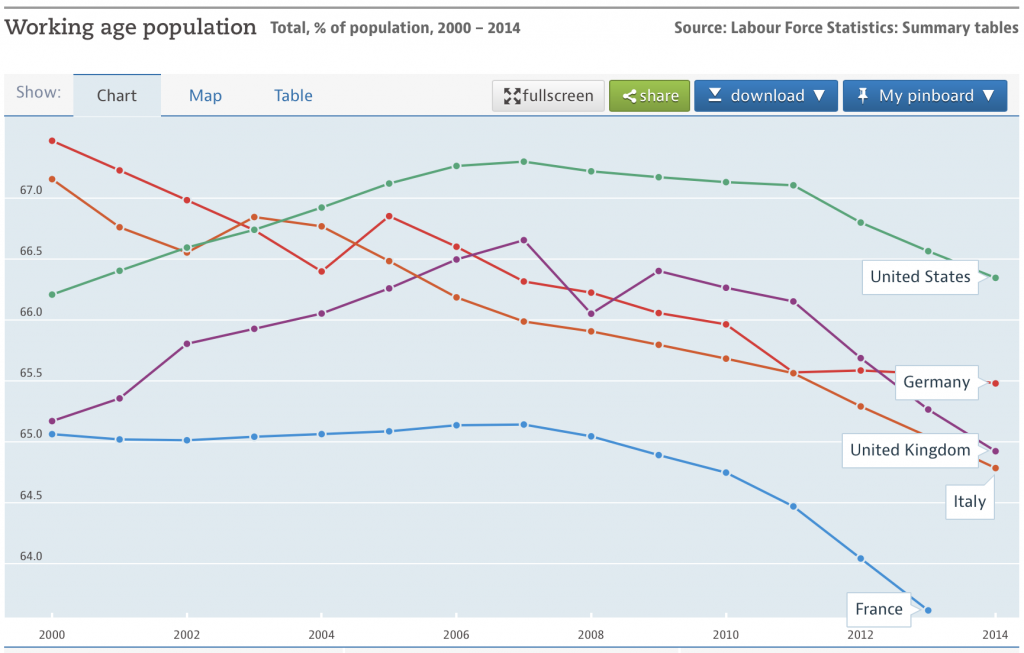WHILE TECHNICALLY & PARTIALLY TRUE, YOU CAN KEEP YOUR DEMOCRATIC-SOCIALISM …
At the Fox News Town Hall on April 15, Senator Bernie Sanders (I-VT), who is currently leading the polls amongst Democrats declaring their candidacy for the 2020 presidential election, didn’t give Trump much credit for the historically low unemployment rates in the U.S., saying other large industrial nations in Europe, like Germany, are seeing even lower unemployment rates … implying that countries practicing economic policies more aligned with his ‘egalitarian’ Democratic-Socialism are doing just as well if not better than Trump’s ‘inequitable’ Republican-Capitalism.

To fact check Bernie Sanders on his unemployment claim, we sourced the latest data available from Organization for Economic Co-operation and Development (OECD) and TradingEconomics.
Countries included in our analysis, besides the U.S., were the five European nations with GDP greater than $1 trillion — Germany, U.K., France, Italy and Spain. The U.S. GDP in 2018 was $19.4 trillion.

The two pieces of employment data we focused on were: Unemployment Rate and Working Age Population.
Unemployment Rate is the number of unemployed people as a percentage of the labor force, where the latter consists of the unemployed plus those in paid or self-employment. Unemployed people are those who report that they are without work, that they are available for work and that they have taken active steps to find work in the last four weeks. When unemployment is high, some people become discouraged and stop looking for work; they are then excluded from the labour force. This implies that the unemployment rate may fall, or stop rising, even though there has been no underlying improvement in the labour market.
In 2018, Germany’s 3.1% unemployment was the only rate lower than the United States’ 3.8%.

Working Age Population is defined as those aged 15 to 64. The basic indicator for employment is the proportion of the working age population aged 15-64 who are employed. This indicator is measured as a percentage of population.
In 2014 (latest data available), the U.S. working age population percentage was 66.35%, compared to Germany’s 65.48%.

(Accessed on 16 April 2019)
If the U.S. working age population was the same percentage of its total population as Germany’s, the U.S. would have 2.8 million fewer working age people to employ.
Therefore, we conclude that Bernie Sanders’ statement was only partially true — technically, Germany does have a lower unemployment rate, however:
1) Germany is the only economically comparable European country that does.
2) Germany has fewer working age people to employ as a percentage of their population, making it easier to achieve a lower unemployment rate.
3) Germany’s annual GDP growth is anemic at 0.6% versus the U.S. at 3.0%.
4) Germany’s average personal income taxes are abusive at 45.5% versus the U.S. at 37.0%.
5) Germany’s total population is only 1/4 and their GDP only 1/5 of the equivalent U.S. numbers, so comparing economic policies between the two countries is a dubious exercise.
Sorry, Bernie, you can keep your Democratic-Socialism, we’ll stick with our Republican-Capitalism.
